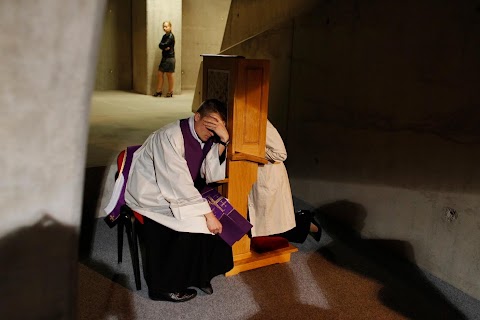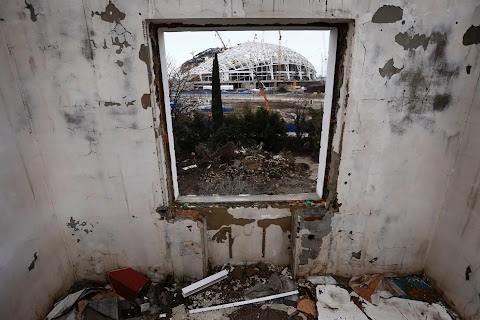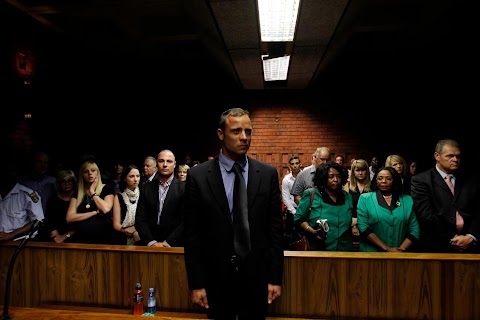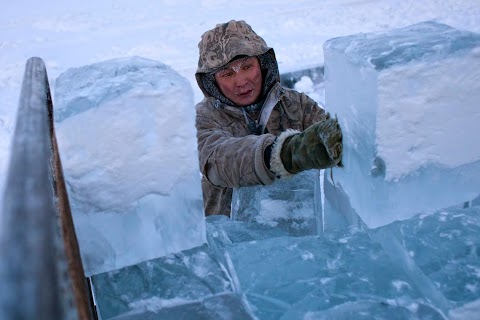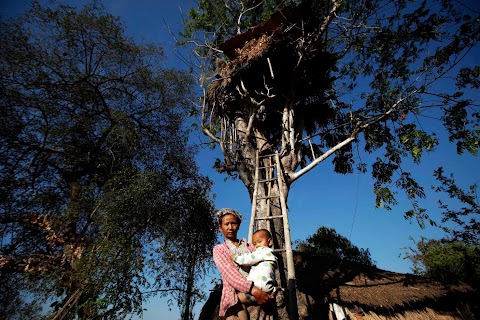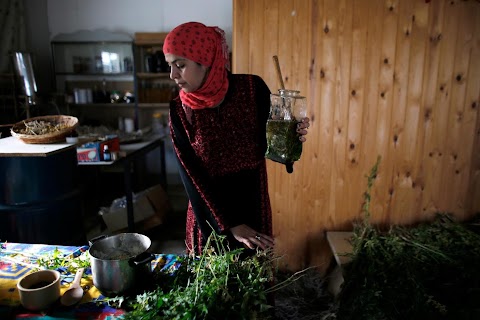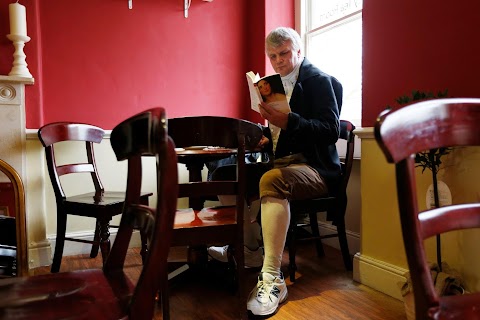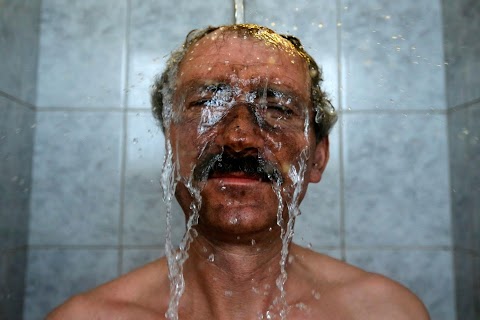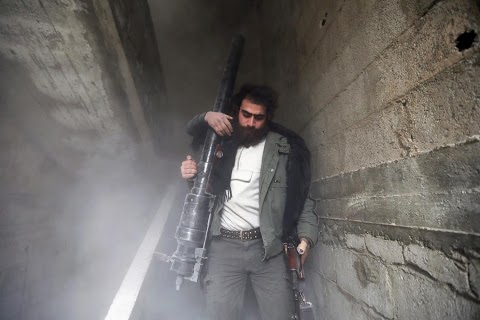
Bloody standstill in Damascus
Reuters photographer Goran Tomasevic spent a month in war-torn Damascus documenting the struggles of rebel fighters on the front line.
He watched as they coordinated and carried out complex attacks, treated their wounded and lost their lives. But with opponents who were equally disciplined and much better armed, the result of the fighting was little more than a deadly stalemate.




Story
Battle For Damascus: Frozen But Bloody
Rebel fighters in Damascus are disciplined, skilled and brave.
In a month on the front line, I saw them defend a swathe of suburbs in the Syrian capital, mount complex mass attacks, manage logistics, treat their wounded - and die before my eyes.
But as constant, punishingly accurate, mortar, tank and sniper fire attested, President Bashar al-Assad's soldiers on the other side, often just a room or a grenade toss away, are also well drilled, courageous - and much better armed.
So while the troops were unable to dislodge brigades of the Free Syrian Army from devastated and depopulated neighbourhoods just east of the city centre - and indeed made little effort to do so - there seems little immediate prospect of the rebels overrunning Assad's stronghold. The result is bloody stalemate.
I watched both sides mount assaults, some trying to gain just a house or two, others for bigger prizes, only to be forced back by sharpshooters, mortars or sprays of machine gun fire.
As in the ruins of Beirut, Sarajevo or Stalingrad, it is a sniper's war; men stalk their fellow man down telescopic sights, hunting a glimpse of flesh, an eyeball peering from a crack.
Fighting is at such close quarters that on one occasion a rebel patrol stumbled into an army unit inside a building; hand grenades deafened us and shrapnel shredded plaster, a sudden clatter of Kalashnikov cartridges and bullets coming across the cramped space gave way in seconds to the groans of the wounded.
From Jan. 14, having reached Damascus from Lebanon by way of undercover opposition networks, I spent four weeks in Ain Tarma, Mleha, Zamalka, Irbin and Harasta - rebel-held areas forming a wedge whose apex lies less than a mile to the east of the walled Old City, with its ancient mosques, churches and bazaars.
Once bustling suburbs are all but empty of life, bar the fighters; six months of combat, of shelling and occasional air strikes have broken open apartment blocks to the winter winds of the high Syrian plateau and choked the streets with rubble.
BARRICADES
Battling the cold in woollen ski-hats or chequered keffiyeh scarves, swathed in layers of cotton and leather jackets, a few thousand unshaven men, many from nearby peasant villages, some who deserted Assad's army, defend a patchwork of barricades and strongpoints, served by cars ferrying ammunition and rations and led by commanders using handheld radios and messenger runners.
Days are punctuated by regular halts for prayer in a conflict, now 23 months old, that has become increasingly one pitting Syria's Sunni Muslim majority, stiffened by Islamist radicals, against Alawites led by Assad; they have support from Iran, from whose Shi'ite Islam their faith is derived.
Typical of the frontline routine was an attack that a couple of dozen men of the brigade Tahrir al-Sham - roughly "Syrian Freedom" - mounted in Ain Tarma on Jan. 30, aiming to take over or at least damage an army checkpoint further up the lane.
I photographed one two-man fire team crouch against a breeze-block garden wall, about 50 metres from their target.
In blue jeans, sneakers and muffled against a morning chill, their role was to wait for comrades to hit the army position with rocket-propelled grenades then rake the soldiers with their AK-47 automatic rifles as they were flushed out into the open.
There was little to make a sound in the abandoned streets. The attackers whispered to each other under their breath.
Then two shots rang out. One of the two riflemen, heavy set and balding, screamed in pain and collapsed back on the tarmac.
The day's assault was going wrong before it even started.
Another fighter crept over to help. Realising the casualty was gravely hurt, two more came up and they dragged the man's inert bulk back across the street, through a narrow gap to relative safety.
Battlefield first-aid is helpless in the face of single shot to the belly. The man died in minutes, his gut ripped through and his blood warming the bare concrete floor. But there was no time to mourn - the army was alerted to the squad's presence.
As the rebels regrouped, a tank shell struck the deserted building, sending shattered concrete and dust raining down on us and the survivors ran for cover, ready to fight another day.
MASS ATTACK
Having captured large areas last July before the front lines again congealed in the capital, the rebels stepped up attacks last month, trying to weaken Assad's grip on the outlying neighbourhoods surrounding the fortified centre of Damascus and pushing across the main ring road in the neighbourhood of Jobar.
Among the boldest offensive moves I saw was an assault by what appeared to be several hundred fighters on a sprawling army barracks in the Irbin district. It was striking for the level of coordination it displayed among numerous units which, lacking uniforms, donned bandannas in bright pinks, reds and oranges to identify their loyalties and reduce the risk of "friendly fire".
One group also brought up a Soviet-built T-72 tank to take part in the Feb. 3 attack. Crewed by men who evidently had been trained in the army, it may have had little ammunition, however.
The infantry skirmish for control of the barracks involved teams of fighters, their colourful headscarves at odds with grim faces and attempts at camouflage, stealing up to a two-metre perimeter wall that stretched for hundreds of metres around.
On a misty morning, they tried to maintain surprise, but once the shooting began there was no turning back, no sign these men might recently have been fearful civilians. They poured sustained rifle fire through gaps in the wall, tossed grenades over it and did what they could to avoid incoming rounds.
One man poked the head of a store-window manikin, fixed on a pole, into a hole in the perimeter, hoping a sniper could be tempted to betray his position. It was a wise precaution. I saw another man picked off later as he aimed through a similar gap.
By afternoon, helped by their tank, they had breached the defences and were inside the compound, looking for enemies, intelligence and, especially, more weapons to carry off. They knew the position itself would be hard to hold - too big and open and vulnerable to familiar retaliatory air strikes.
In the end, at dusk, they pulled back. One commander said 150 of the attackers had been wounded and 20 were killed, a toll to add to the 70,000 the U.N. estimates have died in this war.
REBEL WEAPONRY
The bulk of the rebel armoury is made up of Soviet- and Chinese-made AK-47s, similar to those among Assad's troops. Most rebels have one, though not always many magazines of bullets. I also saw U.S.-made M4 carbines and Austrian Steyr assault rifles not commonly supplied to the Syrian government. Western-allied Sunni Arab leaders in the Gulf have been arming the fighters.
Snipers use Russian Dragunovs and I also saw an American Barrett, a heavy-calibre rifle capable of puncturing metal.
The rebels also have rocket-propelled grenades and some heavier anti-tank weapons - at least enough to discourage their opponents from trying to roll their armour through their lines.
One day, I watched a man fire an antiquated, probably 1960s vintage, Soviet B-10 recoilless rifle, a heavy, bazooka-style cannon normally mounted on a little trolley and weighing about 70 kg (150 pounds); the rebel fighter simply hefted it onto his shoulder and blasted a heavy round somewhere down the road.
Capable of improvising, I also saw men use a shotgun to blast a fuse-lit, home-made grenade at their enemy.
Further from the fighting lines, some vestiges of ordinary life goes on for those civilians who have not joined the army of refugees. Often without electricity or running water, residents try to survive; a few shops sell vegetables, or meat kebabs. Moving around, glimpses of normality can be startling, as I found, turning a corner to find children playing in the street.
Other surprises were less pleasant. One Saturday, Jan. 26, I was following a rebel patrol in Mleha, crawling from house to house through holes smashed in walls to evade the snipers.
Just ahead, those in front emerged to find themselves face to face with some equally astonished soldiers. Gunfire, grenades and screams followed. I threw myself to the ground. Both sides quickly pulled back, the wounded gasping and dragged to safety.
The battle for Damascus grinds on.
(Writing by Dominic Evans and Alastair Macdonald)












